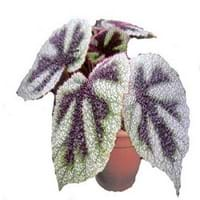Life Span
Perennial
Perennial
Type
Bulb or Corm or Tuber
Herbaceous Perennial
Origin
South America
Chile, Southeast Asia
Types
Pamianthe cardenasii , Pamianthe parviflora , Pamianthe peruviana
Not Available
Number of Varieties
Not Available
Habitat
All sorts of environments
Mountain forests, subtropical regions, Terrestrial
USDA Hardiness Zone
8-10
11-12
Sunset Zone
21,22
H1, H2, 24
Habit
Clump-Forming
Clump-Forming
Flower Color
White
Dark Blue
Flower Color Modifier
Bicolor
Bicolor
Leaf Color in Spring
Dark Green
Light Green
Leaf Color in Summer
Light Green
Light Green
Leaf Color in Fall
Several shades of Green
Light Green
Leaf Color in Winter
Light Green
Light Green
Leaf Shape
Strap shaped
Ovate
Plant Season
Spring, Summer, Fall
Fall, Spring, Summer
Sunlight
Partial Sun, Partial shade
Full Sun
Type of Soil
Loam, Sand
Loam, Sand
The pH of Soil
Acidic, Neutral, Alkaline
Acidic, Alkaline, Neutral
Soil Drainage
Average
Well drained
Bloom Time
Spring, Late Spring, Early Summer, Summer, Late Summer
Early Summer, Late Spring
Tolerances
Drought
Drought
Where to Plant?
Ground, Pot
Container, Ground, Pot
How to Plant?
Offsets
Seedlings, Stem Cutting
Plant Maintenance
Medium
Medium
Watering Requirements
Keep the ground moist but not water-logged
Keep ground moist, Keep the Soil well drained, Requires regular watering
In Summer
Lots of watering
Lots of watering
In Spring
Moderate
Moderate
In Winter
Average Water
Average Water
Soil pH
Acidic, Neutral, Alkaline
Acidic, Alkaline, Neutral
Soil Type
Loam, Sand
Loam, Sand
Soil Drainage Capacity
Average
Well drained
Sun Exposure
Partial Sun, Partial shade
Full Sun
Pruning
Pinch or prune as they grow to promote branching and bushiness, Remove damaged leaves, Remove dead branches, Remove dead leaves, Requires little pruning
Remove damaged leaves, Remove dead branches, Remove dead leaves
Fertilizers
All-Purpose Liquid Fertilizer, High phosphorus
10-10-5, All-Purpose Liquid Fertilizer
Pests and Diseases
Leaf spot, Mosaic viruses
Aphids, Mealy bugs, No serious insect or disease problems, Red spider mite
Plant Tolerance
Drought
Drought
Flower Petal Number
Single
Single
Foliage Texture
Coarse
Fine
Foliage Sheen
Glossy
Matte
Attracts
Bees, Birds, Bumblebees, Butterflies, Hummingbirds, pollinators
Birds, Bugs, Insects, Not Available
Aesthetic Uses
Beautification, Bouquets, Ornamental use, Showy Purposes
Bonsai, Borders, Landscape Designing, Mixed Border, Showy Purposes, Used for decorating walls, fences, gates, hedges, etc.
Beauty Benefits
No Beauty Benefits
Not Available
Environmental Uses
Air purification
Air purification
Medicinal Uses
No Medicinal Use
No Medicinal Use
Part of Plant Used
Not Available
Not Available
Other Uses
Beneficial species for attracting pollinators, Decoration Purposes
Decoration Purposes, Showy Purposes, Used as Ornamental plant, Used for Landscaping
Used As Indoor Plant
No
Yes
Used As Outdoor Plant
Yes
Yes
Garden Design
Bog Garden, Container, Feature Plant, Foundation, Mixed Border, Water Gardens
Bonsai, Container, Hanging Basket, Landscape
Botanical Name
HYMENOCALLIS longipetala
Begonia masoniana
Common Name
Peruvian Daffodil, Spiderlily
Angel's Wings, Butterfly Flower, Poor Man's Orchid
In Hindi
peruvian daffodil
iron cross begonia
In German
peruvian daffodil
Eisenkreuz Begonie
In French
peruvian daffodil
croix de fer bégonia
In Spanish
Pamianthe
el hierro cruzado begonia
In Greek
peruvian daffodil
σταυρό μπιγκόνια σιδήρου
In Portuguese
peruvian daffodil
begônia cruz de ferro
In Polish
peruvian daffodil
Iron Cross begonia
In Latin
peruvian daffodil
ferrum crucem Begonia
Phylum
Magnoliophyta
Tracheophyta
Class
Liliopsida
Magnoliopsida
Order
Asparagales
Cucurbitales
Family
Amaryllidaceae
Begoniaceae
Clade
Angiosperms, Monocots
Angiosperms, Eudicots, Rosids
Tribe
Clinantheae
Not Available
Subfamily
Amaryllidoideae
Not Available
Number of Species
Not Available
Season and Care of Peruvian Daffodil and Begonia masoniana
Season and care of Peruvian Daffodil and Begonia masoniana is important to know. While considering everything about Peruvian Daffodil and Begonia masoniana Care, growing season is an essential factor. Peruvian Daffodil season is Spring, Summer and Fall and Begonia masoniana season is Spring, Summer and Fall. The type of soil for Peruvian Daffodil is Loam, Sand and for Begonia masoniana is Loam, Sand while the PH of soil for Peruvian Daffodil is Acidic, Neutral, Alkaline and for Begonia masoniana is Acidic, Alkaline, Neutral.
Peruvian Daffodil and Begonia masoniana Physical Information
Peruvian Daffodil and Begonia masoniana physical information is very important for comparison. Peruvian Daffodil height is 61.00 cm and width 61.00 cm whereas Begonia masoniana height is 60.00 cm and width 30.00 cm. The color specification of Peruvian Daffodil and Begonia masoniana are as follows:
Peruvian Daffodil flower color: White
Peruvian Daffodil leaf color: Dark Green
Begonia masoniana flower color: Dark Blue
- Begonia masoniana leaf color: Light Green
Care of Peruvian Daffodil and Begonia masoniana
Care of Peruvian Daffodil and Begonia masoniana include pruning, fertilizers, watering etc. Peruvian Daffodil pruning is done Pinch or prune as they grow to promote branching and bushiness, Remove damaged leaves, Remove dead branches, Remove dead leaves and Requires little pruning and Begonia masoniana pruning is done Remove damaged leaves, Remove dead branches and Remove dead leaves. In summer Peruvian Daffodil needs Lots of watering and in winter, it needs Average Water. Whereas, in summer Begonia masoniana needs Lots of watering and in winter, it needs Average Water.





